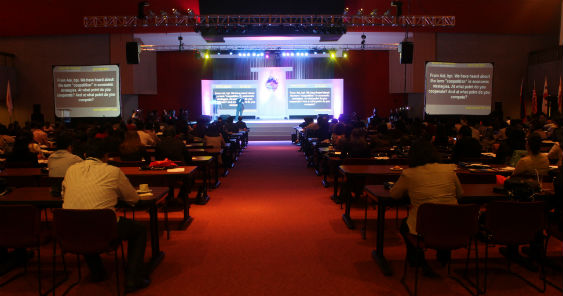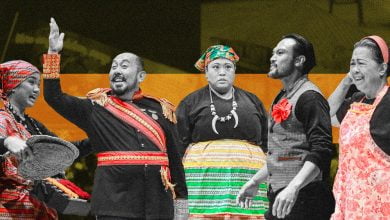MANILA – The banking industry and brand-building in the ASEAN region were two of the topics in focus at the breakout sessions of the Asian Marketing Congress, held last July 17 to 18 at the Philippine International Convention Center.
President and CEO of Executive Training Institute Doodz Policarpio facilitated a breakout session on ‘How to launch your brand in Asia’, where speakers from Malaysia, Sri Lanka, Thailand, Hong Kong, and Vietnam discussed their local consumers. Embassy of Malaysia Trade Commissioner Har Man Ahmad said, “You have to look at the location as well as time.”
Anuvat Chalermchai, President, Marketing Association of Thailand, taught the audience some key Thai words such as ‘sanook’, or fun, which would help brands understand what Thai consumers look for. “If you do something that is fun, people will be engaging with you,” he said.
Sherman Lam, Chairman, Hong Kong Institute of Marketing, advised brands to “Co-create value with the customer through shared experiences.”
Vu-viet Nga Vuviet, Trade Commissioner, Embassy of Vietnam, said the Vietnam market has a lot of potential for Philippine products.
“The typical Vietnamese is that we are friendly, like Filipinos. We always smile. We’re easy to talk to. We also , the way we live is quite similar, and the food we eat also is quite similar. If your brand is successful in the Philippines, I think it will also be successful in Vietnam,” she said.
Rohan Somawansa, past president, Sri Lanka Institute of Marketing, said the Sri Lankan consumer is ‘ModTRADY’. In Sri Lanka, consumers are very modern, but their values system is very traditional.”
Meanwhile, the session on the banking industry was hosted by the Bank Marketing Association of the Philippines.
Its first speaker was Visa International country manager Stuart Tomlinson, who talked about global banking trends and innovations.
Tomlinson discussed how the changes brought about by social media are even affecting commerce and the way brands measure consumer response.
“It’s now about conversation,” Tomlinson said, explaining the concept of people powered media, which is “connected, influential, and social at the core.”
“It’s about people sharing their stories. 60 percent of digital media users create reviews. 92 percent of consumers trust their friends’ reviews,” he said.
“It’s no longer the marketing director dictating the story that you want your consumers to hear. It’s now the consumer dictating the story they want to hear about you,” he added.
As more consumers make use of eCommerce, Tomlinson said that security is becoming an issue. According to Tomlinson, one out of two eCommerce purchasers are concerned about their overall security.
This, Tomlinson said, was both a challenge and an opportunity.
Tomlinson summed up his talk saying, “Adapt to the changing landscape. Be social at the core. Listen to consumers.”
The second speaker was Bangko Sentral ng Pilipinas deputy governor Nestor Espenilla, who discussed market integration and financial stability in the face of the impending ASEAN integration in 2015.
Espenilla said that on paper, the Philippine banking system continues to be robust, but pointed out that banks shouldn’t be complacent and must continue to respond to changing conditions.
Espenilla discussed regional integration, saying “ASEAN integration opens up a bigger regional market, a regional banking community with freer flow of capital.”
He also said that integration can be seen as either an opportunity or a threat, and that they are seeing whether Philippine banks are disadvantaged by having globally competitive banks competing in the market.
“We’ve never hidden the fact that PHL banks are relatively small compared to the ASEAN, but size is not an absolute disqualifier,” he said. “If we open the doors to foreign competition, foreign competition has to play by local rules.”
Espenilla also discussed financial stability as an area that the BSP places particular focus on.
“It has to go beyond individual banks being safe and sound,” Espenilla explained, saying that the BSP looks to protect the entire system, and not just one bank.
“We have to recognize that the reforms are not for the sake of the banks individually, but for the strength of the entire system,” he said.
In pursuing financial stability, Espenilla explained that consumer protection and financial literacy are critical, and the BSP are seeking to empower financial consumers.
“Banks are expected to observe at all times the consumer protected standards of conduct,” he said.
He added that the BSP aims to empower consumers so they can judge and make the right decisions when it comes to their finances. This includes choosing the best bank to work with.
Ultimately, Espenilla said that the ASEAN integration is both beneficial and difficult.
“Every country has its own quirks. Maintaining the value of that is the real challenge,” he said.








